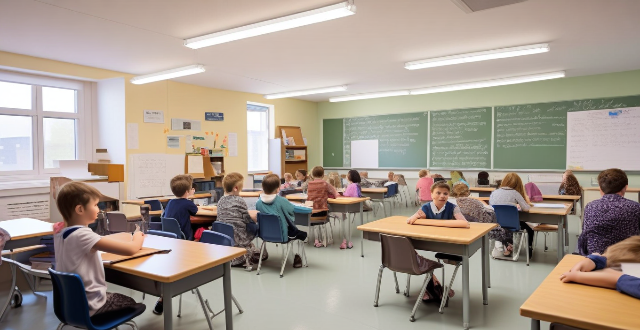Social distancing is crucial to prevent the spread of infectious diseases, but implementing it in educational institutions like schools and universities can be challenging. Challenges include limited classroom space, managing student interaction outside of the classroom, and ensuring staff training and compliance. Effective strategies for implementing social distancing in these environments include classroom redesign, virtual learning options, signage and reminders, and monitoring and enforcement. By prioritizing health and safety, educational institutions can contribute to controlling the spread of infectious diseases while continuing to provide quality education.

Can Social Distancing Be Implemented in Schools and Universities Effectively?
Introduction
Social distancing is a crucial measure to prevent the spread of infectious diseases, such as COVID-19. However, implementing it in educational institutions like schools and universities can be challenging due to their unique settings and requirements. In this article, we will explore whether social distancing can be effectively implemented in these environments.
Challenges of Implementing Social Distancing in Schools and Universities
Classroom Settings
One of the main challenges of implementing social distancing in classrooms is the limited space available. Many classrooms are designed to accommodate a large number of students, making it difficult to maintain a safe distance between them. Additionally, some subjects require practical activities or group work, which may not be possible under social distancing guidelines.
Student Interaction
Another challenge is managing student interaction outside of the classroom. Schools and universities often have common areas where students gather, such as cafeterias, libraries, and recreational facilities. Encouraging students to maintain social distancing in these spaces can be difficult, especially if they are not aware of the importance of doing so.
Staff Training and Compliance
Effective implementation of social distancing also requires proper training for staff members and compliance from everyone involved. This includes ensuring that teachers, administrators, and support staff understand the guidelines and are able to enforce them consistently.
Strategies for Effective Implementation of Social Distancing in Schools and Universities
Classroom Redesign
To address the challenge of limited space in classrooms, some schools and universities have redesigned their classrooms to allow for more distance between students. This may involve rearranging seating arrangements, using dividers or barriers between desks, or even converting larger spaces into multiple smaller classrooms. By doing so, they can create a safer environment for both students and teachers.
Virtual Learning Options
Another strategy is to offer virtual learning options for certain subjects or courses. This allows students to participate in classes remotely, reducing the number of people physically present in the classroom. Virtual learning can also provide flexibility for students who may need to self-isolate due to illness or exposure to someone with an infectious disease.
Signage and Reminders
Placing signage throughout the school or university campus can help remind students and staff about the importance of social distancing. Signs can include reminders about staying at least six feet apart, wearing masks, and avoiding close contact with others. Additionally, regular announcements or messages from school leaders can reinforce these guidelines and encourage compliance.
Monitoring and Enforcement
Finally, monitoring and enforcement are crucial components of effective social distancing implementation. Schools and universities can establish protocols for dealing with non-compliance, such as warnings or disciplinary action for repeated violations. They can also assign staff members to monitor common areas and ensure that social distancing guidelines are being followed.
Conclusion
While implementing social distancing in schools and universities presents several challenges, it is possible to do so effectively by adopting strategies such as classroom redesign, virtual learning options, signage and reminders, and monitoring and enforcement. By prioritizing the health and safety of students, staff, and the broader community, educational institutions can contribute to controlling the spread of infectious diseases while continuing to provide quality education.